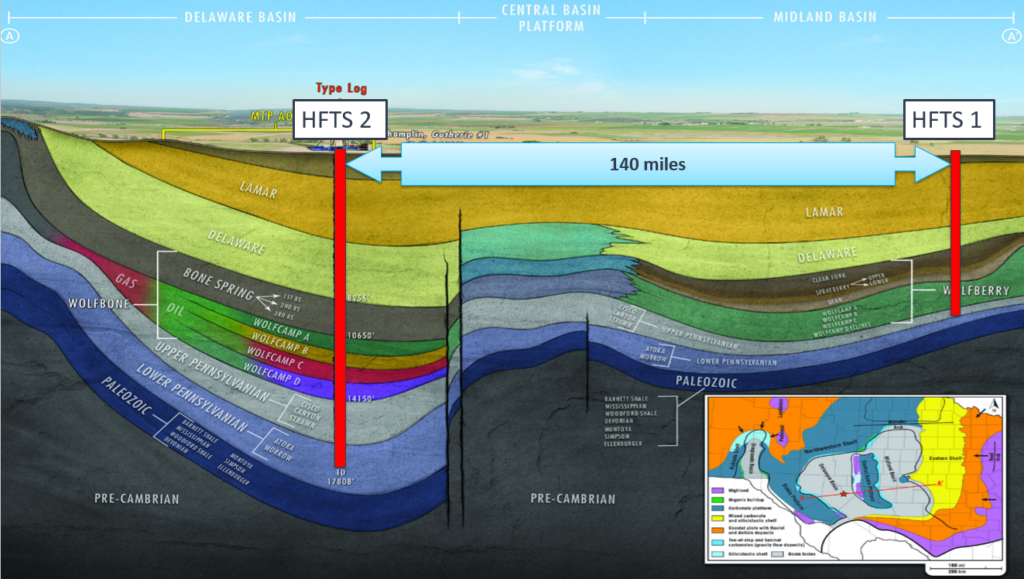Background
The Permian Basin is one of the most prolific oil and natural gas geologic basins in the U.S. It is central to America’s energy resurgence, enabled by development of the shale resources within U.S. geologic basins. The Permian-Delaware Basin produces more than 50,000 barrels of oil per day and is an area of active development. The Permian Basin is approximately 250 miles wide and 300 miles long across West Texas and southeastern New Mexico. It encompasses several sub-basins, including the Delaware Basin and the Midland Basin, where the HFTS1–Midland test site was located.
Given the complexity of shale formations, significant geotechnical differences occur within the respective basins over very short distances. The Delaware Basin is a deeper basin than the Midland with vertical well depths exceeding 10,000 feet. The Delaware Basin is also a geo-pressured basin, adding to the difference between the two basins. From a geologic and geotechnical perspective, industry considers them separate and distinct basins.

Despite the long history of hydraulic fracturing, the optimal number of fracturing stages during multi-stage fracture stimulation in horizontal wells is not known. In addition to the increased expense of multistage fracturing in horizontal wells, increasing the number of fracturing stages does not always correlate with an increase in production. The problem is the application of a uniform fracture stimulation design to all stages with no consideration for geological variations along the wellbore. The result is an inefficient use and a costly waste of energy and water.
Optimization of the fracturing process requires an understanding of the cause-and-effect relationship between fracturing parameters and local geological properties at a given location along the wellbore. Realizing that the generalized rock mechanics theories and hypotheses are not truly applicable to fractured and laminated shales, quantifiable impacts of a shale’s geomechanical and depositional features are a prerequisite for design and implementation of optimized hydraulic fractures. The overarching goal of this project is to understand and define the relationships of shale geology and fracture dynamics using detailed field data that includes coring of the fracture domain. Analyses of the data will aid in updating fracture design models, and improve the effectiveness of individual hydraulic fracture stages.
